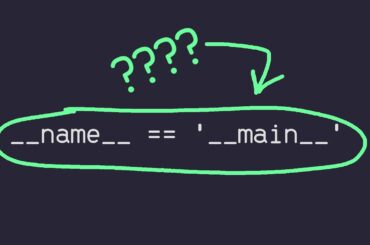The map() function executes a specified function for each item in an iterable. The item is sent to the function as a parameter.
Python is known for its powerful and flexible built-in functions that make programming easier and more efficient. One such function is map(). In this article, we will explore everything you need to know about the map() function, including related topics, examples, and detailed explanations.
What is the map() Function?
The map() function in Python applies a given function to all items in an input list (or any iterable) and returns an iterator of the results. It is a fundamental tool for functional programming in Python, allowing for clean and readable code when transforming data.
Syntax of the map Function
map(function, iterable, ...)function: The function to apply to each element.iterable: One or more iterables (e.g., lists, tuples).
Basic Example of map
Let’s start with a simple example to illustrate how map() works.
# Define a function that squares a number
def square(num):
return num * num
# List of numbers
numbers = [1, 2, 3, 4, 5]
# Use map to apply the square function to each element in the list
squared_numbers = map(square, numbers)
# Convert the map object to a list and print it
print(list(squared_numbers)) # Output: [1, 4, 9, 16, 25]In this example, the square function is applied to each element in the numbers list, producing a new list of squared values.
Using lambda with map
Instead of defining a separate function, you can use a lambda function with map() for concise code.
# List of numbers
numbers = [1, 2, 3, 4, 5]
# Use map with a lambda function to square each number
squared_numbers = map(lambda x: x * x, numbers)
# Convert the map object to a list and print it
print(list(squared_numbers)) # Output: [1, 4, 9, 16, 25]Here, the lambda function lambda x: x * x replaces the need for a separate square function, achieving the same result in a single line.
Mapping Multiple Iterables
The map() function can also be used with multiple iterables. It applies the function to the corresponding elements of the iterables in parallel.
# Lists of numbers
numbers1 = [1, 2, 3]
numbers2 = [4, 5, 6]
# Use map to add corresponding elements of the two lists
summed_numbers = map(lambda x, y: x + y, numbers1, numbers2)
# Convert the map object to a list and print it
print(list(summed_numbers)) # Output: [5, 7, 9]In this example, map() applies the lambda function lambda x, y: x + y to pairs of elements from numbers1 and numbers2, resulting in a new list of their sums.
Practical Applications of map
Converting Data Types
The map() function is often used to convert data types within a collection.
# List of strings representing numbers
str_numbers = ['1', '2', '3', '4']
# Use map to convert each string to an integer
int_numbers = map(int, str_numbers)
# Convert the map object to a list and print it
print(list(int_numbers)) # Output: [1, 2, 3, 4]Here, map(int, str_numbers) converts each string in str_numbers to an integer.
Extracting Specific Attributes
map() is useful for extracting specific attributes from a list of objects.
# List of dictionaries representing people
people = [
{'name': 'Alice', 'age': 25},
{'name': 'Bob', 'age': 30},
{'name': 'Charlie', 'age': 35}
]
# Use map to extract the names of all people
names = map(lambda person: person['name'], people)
# Convert the map object to a list and print it
print(list(names)) # Output: ['Alice', 'Bob', 'Charlie']In this example, map() extracts the ‘name’ attribute from each dictionary in the people list.
Using map with Functions from itertools
The itertools module provides additional tools for working with iterables. You can use map() in combination with these tools for more complex operations.
Example: Using starmap
itertools.starmap() is similar to map(), but it accepts a function and an iterable of argument tuples.
from itertools import starmap
# List of tuples representing pairs of numbers
pairs = [(1, 2), (3, 4), (5, 6)]
# Use starmap to multiply the pairs
product = starmap(lambda x, y: x * y, pairs)
# Convert the starmap object to a list and print it
print(list(product)) # Output: [2, 12, 30]In this example, starmap applies the lambda function lambda x, y: x * y to each tuple in pairs, resulting in a list of products.
Performance Considerations
While map() is efficient, it’s essential to consider its performance implications. For small data sets, the performance difference is negligible, but for large data sets, using list comprehensions might be faster due to their optimized implementation in Python.
Conclusion
The map() function is a powerful and versatile tool in Python, enabling you to apply functions to iterable elements efficiently. Whether you’re converting data types, extracting attributes, or performing parallel operations on multiple iterables, map() simplifies your code and enhances readability. By incorporating lambda functions and combining map() with other Python modules like itertools, you can achieve more complex data manipulations with ease.
Understanding and utilizing map() will significantly improve your coding skills and efficiency in Python.


